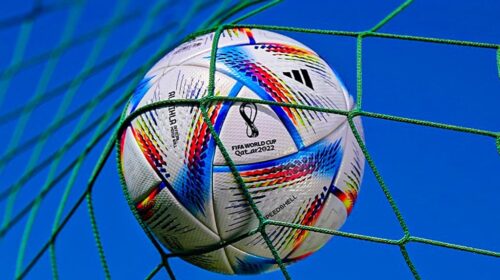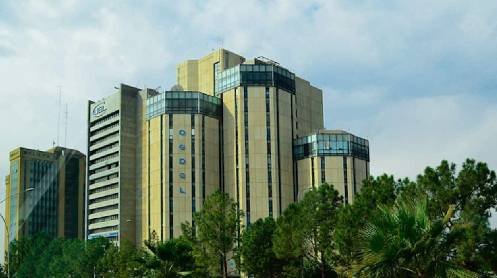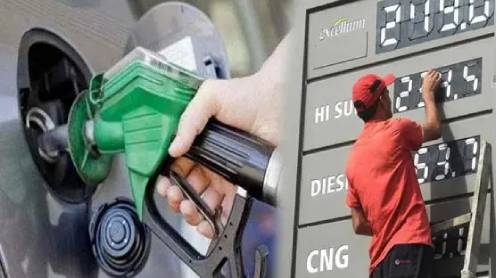The FIFA World Cup 2022 begins on Sunday as focus finally moves towards the action on the field, marking the culmination of Qatar’s extraordinary campaign to first win the vote to land the tournament and then embark on a spending spree of tens of billions of dollars to build the stadiums and infrastructure to cater to it.
The country of barely 3 million people, one of the world’s biggest producers of natural gas, has spent lavishly. New stadiums cost more than $6.5 billion and a driverless metro system with a price tag of $36 billion serves five of the eight venues. Some estimates put total infrastructure spending over the past decade at $200 billion, according to an AFP report.
But Qatar has been subject to criticism with the sport’s governing body FIFA pleading to World Cup teams to focus on the soccer.
Back in Pakistan, however, there is another kind of interest, even though its men’s team is placed 194th in the 211-team rankings, according to the latest update in October. The women’s team rank is comparatively better — at 160th out of 187 positions in total.
FIFA pleads with World Cup nations to ‘focus on football’ in Qatar
Suffice to say, the interest will not be on gameplay, but on the match ball – Al Rihla – as Pakistan pitches in with its share of the contribution in the almost month-long event.
Forward Sports, a Sialkot-based company, is one of two manufacturers — the other one is from China – that have provided FIFA with at least 300,000 units of the match ball for this event.
In 2021-22, the company was among Sialkot’s top export-earners with roughly $51 million in revenue (Rs9.7 billion in rupee terms given the lower exchange rate at the time). The country on the whole exported sports goods worth Rs65.2 billion during the year, according to data available with Pakistan Bureau of Statistics.

Forward Sports says it has produced roughly one-third of the overall quantity of the ball named Al Rihla, which means ‘the journey’ in Arabic, revealed in March by German sportswear firm Adidas as the official one for the World Cup.
“The football for a World Cup is always a dream, and a crown jewel for any supplier in the world,” Hassan Masood, director at Forward Sports, told Business Recorder in an exclusive interview.
Luxury yachts and ‘real VIPs’ as Dubai gears up for World Cup
This is not the first time the sports goods manufacturer has supplied footballs for a World Cup. Masood said this was the third successive contract after the company also landed deals for the 2014 and 2018 events.
Footballs for FIFA Football World Cup 2022
There are mainly two types of balls produced for such a global event.
“There is a match ball — used by players during the international game. But there are another — the more economical balls that are sold in the open market.
“We have a 35 percent share in match balls (for 2022), but a substantially higher proportion of the open-market product at around 70 percent.”
Masood said overall 300,000 match balls have been provided to FIFA by both manufacturers for the event.
“The match ball quantity is only 300,000, but when you include units that are going to the open market, we are talking about 10 million.”
Al Rihla is thermo-bonded with panels attached with especially-developed water base glue. Forward Sports says it developed this technology in 2007.
“The first match ball we made was for the UEFA Champions League ‘Finale ball’ in 2009 called Istanbul,” Masood said.
How did Forward Sports get here?
The relevance Forward Sports received in the international arena appears to be because of its ability to adapt to the industry’s changing needs.
“Moving from hand-stitched to other technologies — it was actually market-driven. Hand-stitch for a very long time was the only technology available for football manufacturing. And, like any other product, hand-stitch also started to reduce and live out its product lifecycle.”
According to Masood, the market was in search for more designs, and wanted higher volumes.
“With hand-stitched balls, it was not possible. A skilled person can make up to 5.5 balls a day, which limits capacity.
“Hence, we started to look for other technologies. A Japanese company introduced thermo-bonded technology in 2003, but it was patented and therefore, its capacity was limited.
“So, we stepped up and developed a less expensive product out of the patent of that supplier. Our development team worked hard on this. We introduced our first ball in 2007.”
Masood said there has been no turning back since.
“We don’t produce a single hand-stitched ball in our factories now. Our production has doubled since 2005-06.”
Masood was quick to elaborate that labour has not been cut down.
“We had a labour force of about 3,000 people then (when the balls were hand-stitched). Today, we have a force of 4,200.”
“We have good retention as 15 percent of the people working here have been with us for 25 years.”
Masood said match balls are always sourced to more than one supplier.
“It is a big event and brands don’t want to put all the eggs in one basket. If something happens, then there is a backup.”
Masood said the number of balls produced for the 2022 edition of the World Cup has not increased when compared with the previous global event.
“The pandemic and Qatar being the host have had some impact. But the bigger thing to look at is that the number has not gone down.”
Declining to share earnings figures, Masood said the World Cup football contract is expected to bring about Rs6 billion or $27 million for the company.
Masood said he remains ecstatic that the company’s product will feature at an event that, in 2018, was followed by around 3.5 billion viewers, according to FIFA. The number projected for 2022 is expected at 5 billion people around the world, said FIFA President Gianni Infantino back in May.





